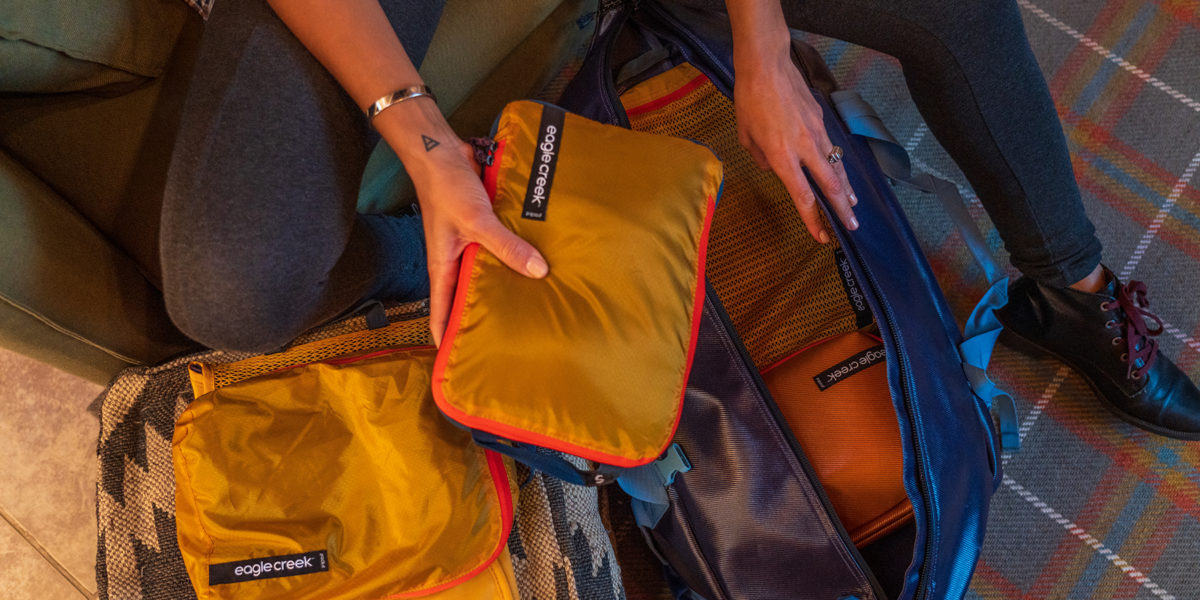
These Packing Cubes Make Backpacking Trips More Organized Than Ever
Weeks of supplies in a backpack can quickly unravel what was initially a tidy packing experience.

Courtesy of Eagle Creek
We only recommend things we love. If you buy something through our site, we might earn a commission.
You’ve no doubt heard at least one friend rave about newfound packing organization courtesy of the addition of packing cubes. Without ever using them, the thought of adding a series of zippered compartments to anything doesn’t necessarily elicit much in the “wow” department. But that reaction is sure to change the moment you begin making use of these handy organizers in your previously disheveled suitcase.
But what about using packing cubes for backpacking?
If you’re anything like me, many of your trips are the variety that warrant carrying the majority of your belongings on your back. In fact, any time there’s the prospect of rough terrain—which comprises most of my traveling—I opt for anything from a 45- to 60-liter bag. (It’s a lesson I learned the hard way many years ago while traveling through Greece, where mountainside cobblestones were not exactly kind to the flimsy wheels of my colossal roller bag.)
An inevitable outcome when packing one or two weeks’ worth of supplies into a backpack is that things are going to get moved around in a hurry. Fishing out hygiene items, food, and clothing that doesn’t reek after miles of hiking in extreme conditions can quickly unravel what was initially considered a tidy packing experience.
Before you know it, you’re doing your best to separate dirty from clean while using items like plastic bags or flip flops as filth barriers. It works, sort of, but is it the most efficient approach? Decidedly not.
Many packing cubes, such as the Luggage Organizers from LeanTravel, are made from durable, flexible fabric and oftentimes come with transparent mesh that makes identifying their contents easier for quick grab-and-go use. Cubes come in a variety of sizes that allow travelers to pack more and in tidier fashion. Throw an extra pair of shoes in one, t-shirts in another, or electronics in a smaller pouch. Packing via compressed sections makes it abundantly easier to grab specific items without disturbing the rest of your pack’s contents. And by avoiding digging through the entire contents of a bag to find one particular item, keeping clothing wrinkle-free is also made much easier.
For campers, meanwhile, packing a cube full of softer contents can easily allow it to double as a camp pillow, saving even more space by eliminating an item that many would otherwise bring.
Best of all, packing cubes are affordable. While a popular brand like Eagle Creek sells sets of two compression cubes for a cost-friendly $40, the aforementioned LeanTravel offers a set of three for only $31. Other reliable options include Gonex, which sells sets of four for $34, and SuitedNomad, which offers a set of six for just $40.
Whatever the use, the ease of unpacking and re-packing items, especially in a backpacking situation in which mobility is the name of the game, should put packing cubes at the top of your list of must-haves.
